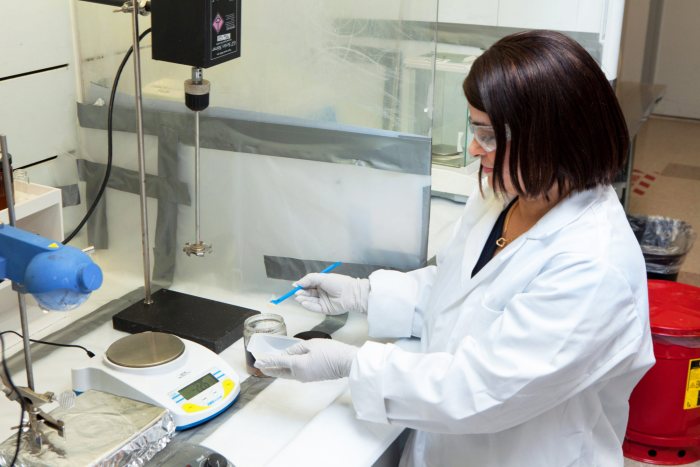
Image: Printed Energy Pty Ltd
An Australian project has set its sights on creating printed batteries that could ultimately be integrated on the back of solar panels.
A collaboration between Printed Energy Pty Ltd, the University of Queensland and the University of New South Wales, the venture recently scored a guernsey in the latest round of Cooperative Research Centre Projects (CRC-Ps) grants; receiving $2 million towards the $12 million project.
Printed Energy says it is developing a unique set of new battery chemistries that can be manufactured using conventional roll-to-roll printing techniques, and it also has patents and IP relating to partially developed printed photovoltaics technology.
The company isn’t providing too much information about the battery chemistries at this stage, but states:
“The key compounds are commonly available metals such as Zinc and Manganese Oxides and inorganic matrix structures mixed with polymers and electrolytes. Most importantly, they are all non-toxic and very low flammability.”
That last point is particularly important if the product is going to be plastered onto the back of a solar panel, where lots of energy is buzzing about very close by and can get rather toasty in normal operation.
Starting Out Small
Printed Energy says it is initially focusing on smaller applications including healthcare equipment, sensors, internet of things (IoT) gadgets and wearable devices before moving on to larger scale applications such as combining flexible solar panels with storage.
From small wearable devices to residential solar panels with a useful level of storage will be a rather large jump, and all sorts of questions present regarding the energy density, life, serviceability and safety of such a system.
For example, a 6kW solar power system is comprised of 24 panels and is well-matched to a 10 kWh battery. In this scenario, back-of-virtual-envelope calculations indicate thin-film batteries integrated on a standard solar panel would need to store around 400 watt-hours.
First things first though – Printed Energy has set a goal of bringing the initial printed batteries for small devices to market within 2 years and no doubt that in itself will be quite a feat.
UQ Dow Centre for Sustainable Engineering and Innovation Director Professor Chris Greig is particularly upbeat about the potential for printed batteries.
“This technology represents not just an opportunity for us to be involved in cutting-edge science and innovation, but presents a real opportunity for the next generation of Australian manufacturing,” he said.
Technology using printing processes for producing solar components has existed for a while, but interest has been further piqued recently after Australia’s first printed solar demonstration site was unveiled at the University of Newcastle last month.
Printed Energy has an interesting backstory. It’s an investee company of St. Baker Energy Innovation Fund, which was founded by Trevor St Baker – a man described as “far from a card-carrying, carrot-munching greenie”. Mr. St Baker has interests in a coal power station and has previously warned ambitious renewable energy targets aren’t practical.

 RSS - Posts
RSS - Posts



Speak Your Mind